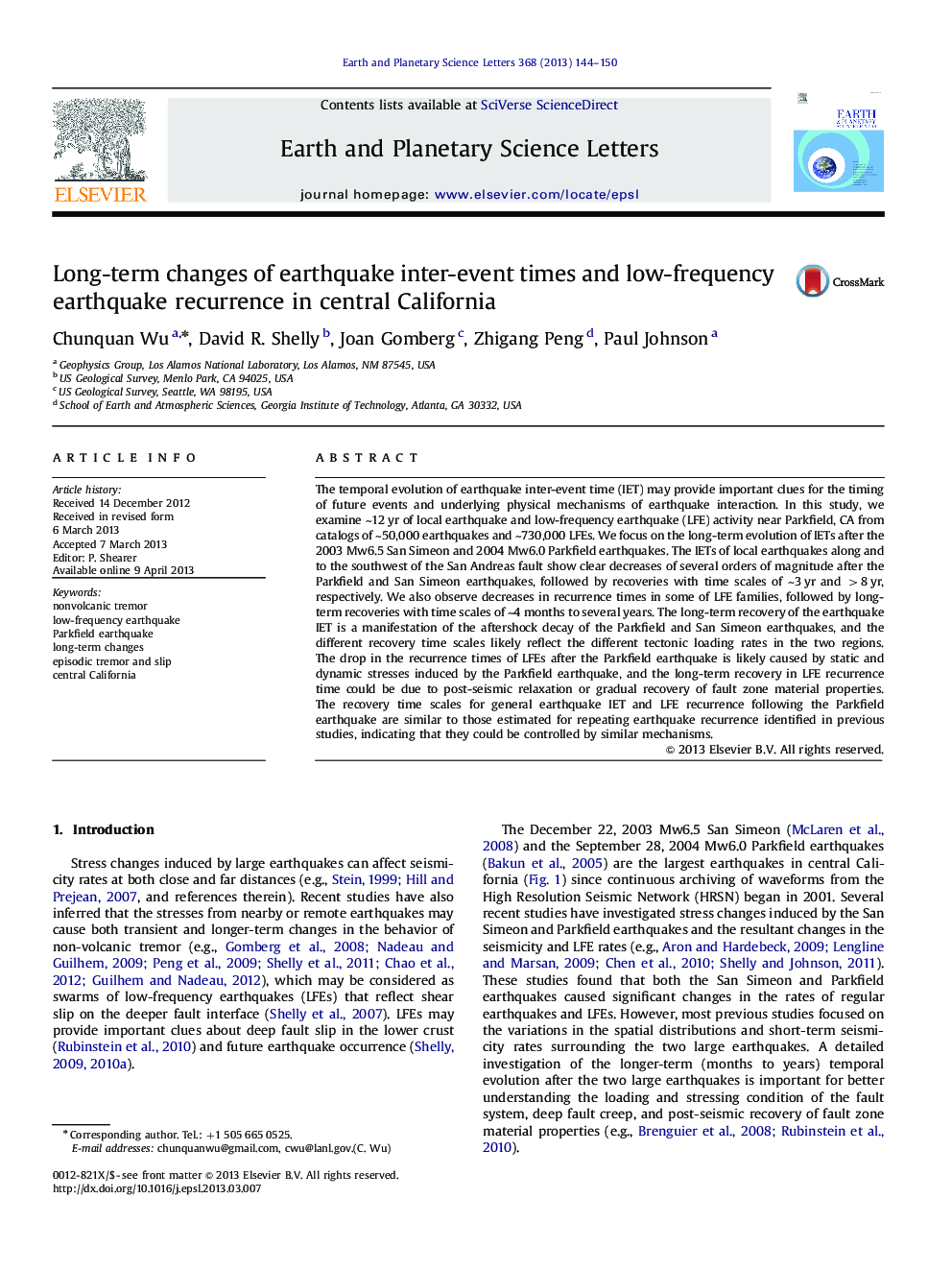| Article ID | Journal | Published Year | Pages | File Type |
|---|---|---|---|---|
| 6430316 | Earth and Planetary Science Letters | 2013 | 7 Pages |
â¢Long-term recovery in earthquake inter-event times and LFE recurrence.â¢Support hypothesis that aftershock duration is inversely proportional to the loading rate.â¢Possible mechanisms: post-seismic relaxation and recovery of fault zone friction properties.â¢Recovery of regular earthquakes and LFE could be controlled by similar mechanisms.
The temporal evolution of earthquake inter-event time (IET) may provide important clues for the timing of future events and underlying physical mechanisms of earthquake interaction. In this study, we examine ~12Â yr of local earthquake and low-frequency earthquake (LFE) activity near Parkfield, CA from catalogs of ~50,000 earthquakes and ~730,000 LFEs. We focus on the long-term evolution of IETs after the 2003 Mw6.5 San Simeon and 2004 Mw6.0 Parkfield earthquakes. The IETs of local earthquakes along and to the southwest of the San Andreas fault show clear decreases of several orders of magnitude after the Parkfield and San Simeon earthquakes, followed by recoveries with time scales of ~3Â yr and >8Â yr, respectively. We also observe decreases in recurrence times in some of LFE families, followed by long-term recoveries with time scales of ~4 months to several years. The long-term recovery of the earthquake IET is a manifestation of the aftershock decay of the Parkfield and San Simeon earthquakes, and the different recovery time scales likely reflect the different tectonic loading rates in the two regions. The drop in the recurrence times of LFEs after the Parkfield earthquake is likely caused by static and dynamic stresses induced by the Parkfield earthquake, and the long-term recovery in LFE recurrence time could be due to post-seismic relaxation or gradual recovery of fault zone material properties. The recovery time scales for general earthquake IET and LFE recurrence following the Parkfield earthquake are similar to those estimated for repeating earthquake recurrence identified in previous studies, indicating that they could be controlled by similar mechanisms.
